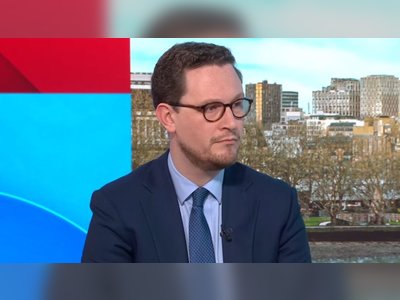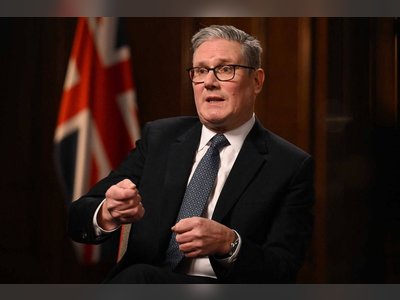Scientists Use Electrode Implants to Help Blind People ‘See’ Shapes and Letters - All Without Using Their Eyes
The neural implants used by the Baylor researchers work similarly to someone tracing a shape on the palm of a blind person's hand.
Scientists have come with a groundbreaking new way for blind people to “see” by delivering visual information directly to the brain, rather than through damaged eyes.
For most adults who lose their vision, blindness generally occurs as a result of damage to the eyes or optic nerve while the brain remains intact.
Researchers have long proposed a workaround to this condition by developing a device that could pass images from a camera straight to the brain, skipping the eyes in the process.
Now in a new paper published in the journal Cell, a team of investigators from Baylor College of Medicine in Houston revealed that they are one step closer to that goal.
The researchers describe an approach in which they used implanted electrodes to “trace” shapes on the surface of the visual cortex that participants were able to “see”.
“When we used electrical stimulation to dynamically trace letters directly onto patients’ brains, they were able to ‘see’ the intended letter shapes and could correctly identify different letters,” said senior author Dr. Daniel Yoshor, a professor of neurosurgery at Baylor. “They described seeing glowing spots or lines forming the letters, like skywriting.”
Previous attempts to stimulate the visual cortex have proven far less successful. Earlier methods treated each electrode like a pixel in a visual display, stimulating many of them simultaneously. Participants could detect spots of light, but found it hard to discern visual objects or forms.
Study first author Professor Michael Beauchamp said: “Rather than trying to build shapes from multiple spots of light, we traced outlines. Our inspiration for this was the idea of tracing a letter in the palm of someone’s hand.”
The investigators then tested the approach in four sighted people who had electrodes implanted in their brains to monitor epilepsy, and two blind people who had electrodes implanted over their visual cortex.
Stimulation of these multiple electrodes in sequences produced perceptions of shapes that subjects were able to correctly identify as specific letters.
Researchers believe that the new approach demonstrates that it could be possible for blind people to regain the ability to detect and recognize forms, although there are many obstacles to perfecting the technique.
“The primary visual cortex, where the electrodes were implanted, contains half a billion neurons. In this study we stimulated only a small fraction of these neurons with a handful of electrodes,” said Beauchamp. “An important next step will be to work with neuroengineers to develop electrode arrays with thousands of electrodes, allowing us to stimulate more precisely.
“Together with new hardware, improved stimulation algorithms will help realize the dream of delivering useful visual information to blind people,” he concluded.
For most adults who lose their vision, blindness generally occurs as a result of damage to the eyes or optic nerve while the brain remains intact.
Researchers have long proposed a workaround to this condition by developing a device that could pass images from a camera straight to the brain, skipping the eyes in the process.
Now in a new paper published in the journal Cell, a team of investigators from Baylor College of Medicine in Houston revealed that they are one step closer to that goal.
The researchers describe an approach in which they used implanted electrodes to “trace” shapes on the surface of the visual cortex that participants were able to “see”.
“When we used electrical stimulation to dynamically trace letters directly onto patients’ brains, they were able to ‘see’ the intended letter shapes and could correctly identify different letters,” said senior author Dr. Daniel Yoshor, a professor of neurosurgery at Baylor. “They described seeing glowing spots or lines forming the letters, like skywriting.”
Previous attempts to stimulate the visual cortex have proven far less successful. Earlier methods treated each electrode like a pixel in a visual display, stimulating many of them simultaneously. Participants could detect spots of light, but found it hard to discern visual objects or forms.
Study first author Professor Michael Beauchamp said: “Rather than trying to build shapes from multiple spots of light, we traced outlines. Our inspiration for this was the idea of tracing a letter in the palm of someone’s hand.”
The investigators then tested the approach in four sighted people who had electrodes implanted in their brains to monitor epilepsy, and two blind people who had electrodes implanted over their visual cortex.
Stimulation of these multiple electrodes in sequences produced perceptions of shapes that subjects were able to correctly identify as specific letters.
Researchers believe that the new approach demonstrates that it could be possible for blind people to regain the ability to detect and recognize forms, although there are many obstacles to perfecting the technique.
“The primary visual cortex, where the electrodes were implanted, contains half a billion neurons. In this study we stimulated only a small fraction of these neurons with a handful of electrodes,” said Beauchamp. “An important next step will be to work with neuroengineers to develop electrode arrays with thousands of electrodes, allowing us to stimulate more precisely.
“Together with new hardware, improved stimulation algorithms will help realize the dream of delivering useful visual information to blind people,” he concluded.













